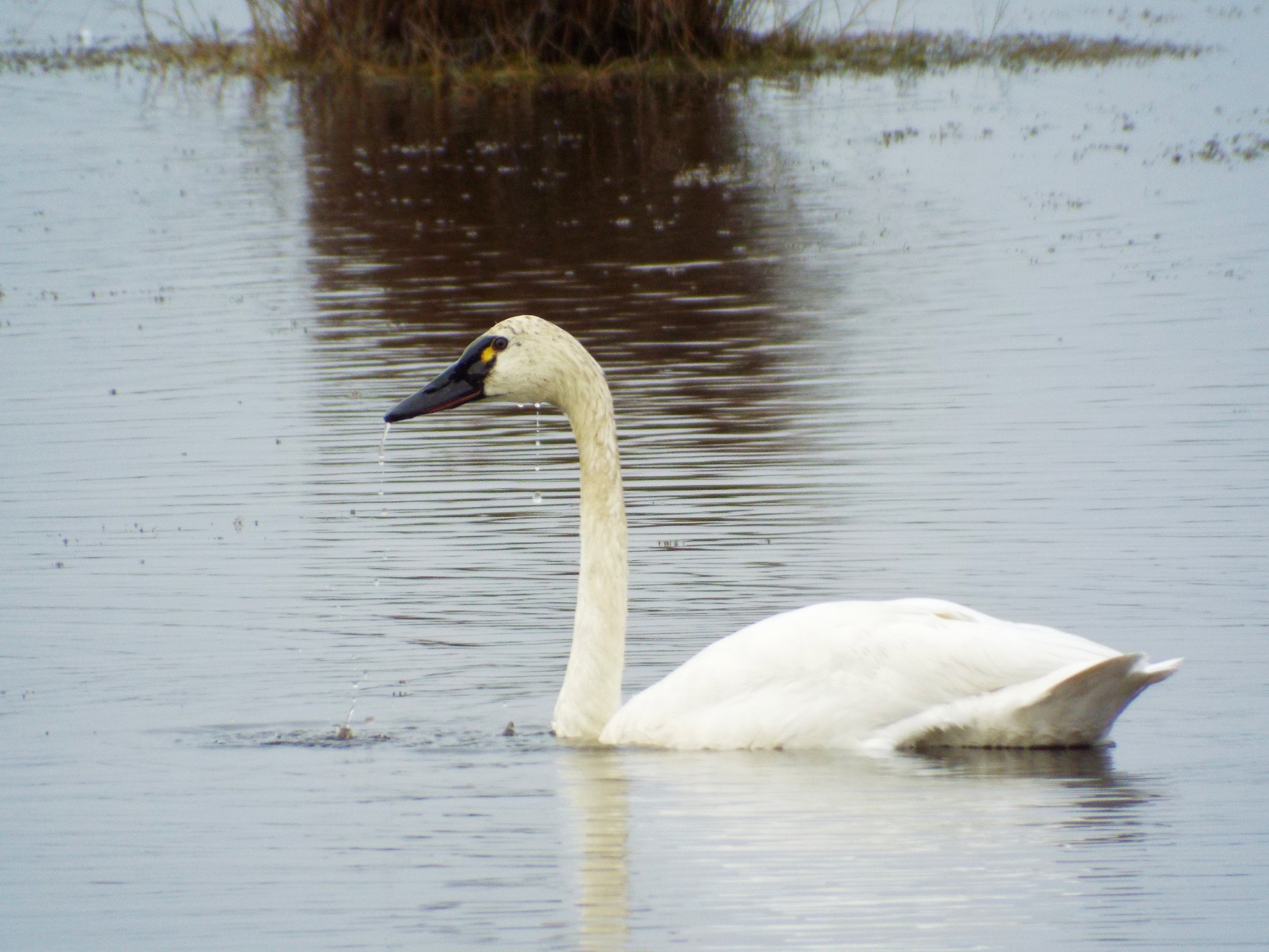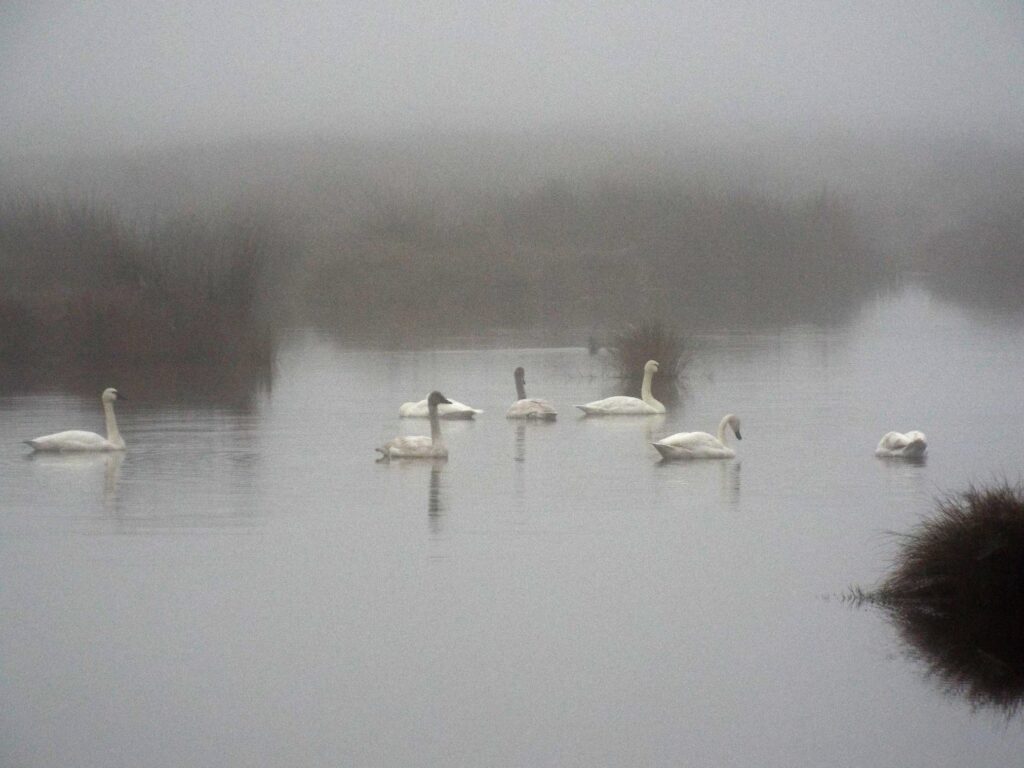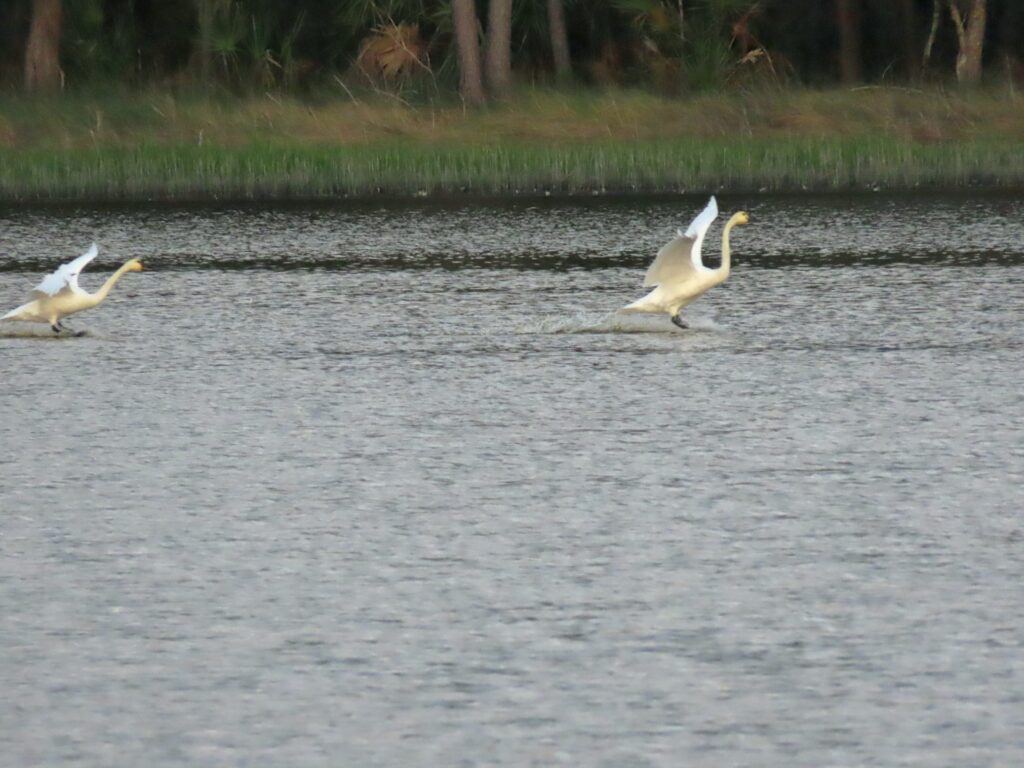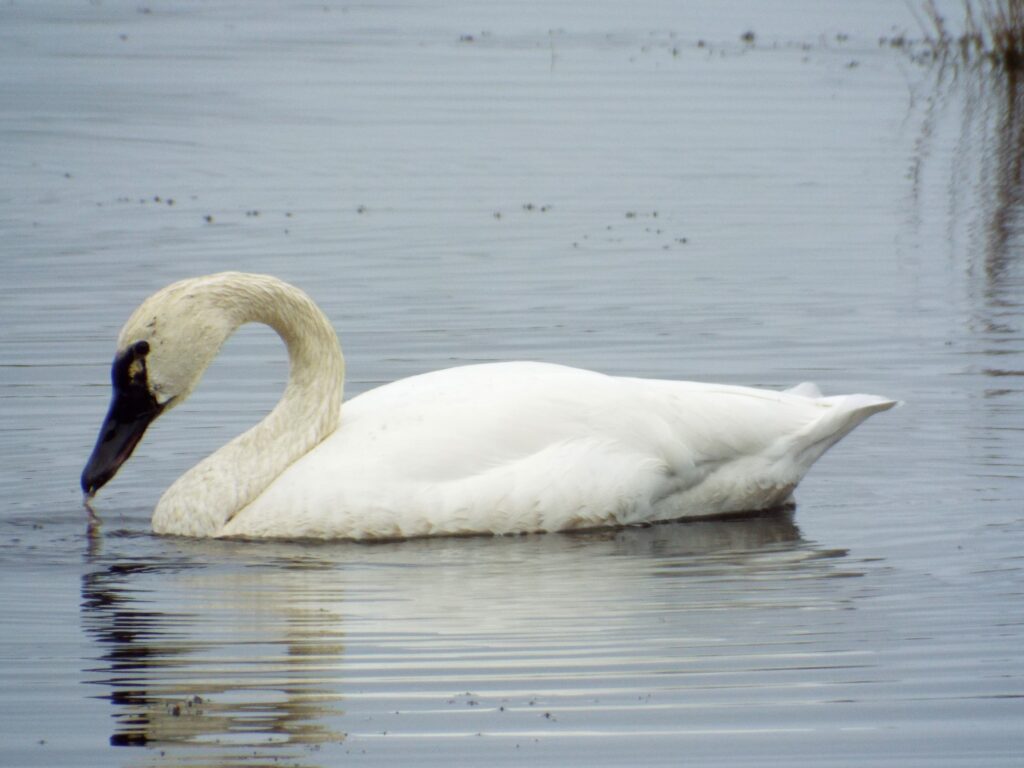





This week for Flora and Fauna Friday we have an oversized icy-white snowbird, the Tundra Swan (Cygnus columbianus).
Tundra Swans are tied with the Wild Turkey for the heaviest bird in South Carolina, sometimes tipping the scales at over 20 pounds. Their impressive five foot wingspan is nearly matched by their four to five foot length. Swans are unmistakable. Their general bigness and solid pearl-white plumage above sturdy black legs puts them in a category of waterfowl all their own. Within the swans we may perchance see three species: Mute Swan (C. olor), Trumpeter Swan (C. buccinator), and Tundra Swan. Tundra Swans are our only regular visitor but the others appear on occasion. The three species can be distinguished by their bill and their build. Mute Swans are native to Europe and the species you’ll see cruising around urban ponds. However, some have escaped into the wild and can occasionally come south to mingle with our Tundra swans. Mute Swans can be identified by their orange bill with a forehead hump. Trumpeter Swans are the largest waterfowl native to North America but only very very rarely come so far South as Edisto. Trumpeter Swans can be identified by their solid black bill and usually rusty head. Tundra Swans are significantly smaller on average than the other two but this size difference isn’t always obvious. Tundra Swans are best distinguished by a patch of saffron-yellow skin beside the eye. Tundra Swans spend the winter here in small flocks on the managed impoundments repurposed from historic rice fields. Here they feed on submerged vegetation alongside a myriad of ducks and the similarly sized American White Pelicans.
Swans are a waterfowl not often associated with the Lowcountry but every year we are visited by a humble caravan of the graceful fowl here in the ACE Basin. I’ve spent many a frigid January morning along the Edisto tiptoeing down a causeway before day breaks. Shuffling into place as the first light of dawn illuminates humidity hanging above an impounded marsh. With the earliest flicker of sunrise the Swans awaken. I am swept up by echoing exclamatory single syllable vibratos. As sunrise intensifies so does the sound and as the fog begins to evaporate the Tundra Swans materialize. Icebergs of white buoy and beacon above the dreary landscape of murky pools and lifeless reeds. They propel themselves effortless along the water with nary a ripple and move their slender necks with angelic elegance. Distant notes approach as a formation of Swans signal their own arrival. Wings flail like flags in a gale along a somehow stable fuselage. Like a flurry they descend to melt upon the water. The aviators kick out their landing gear – heels forward, wings wide – and ski to idle speed. Tundra Swans are by no means common in our state but we are blessed here in the ACE Basin to see them every year. I do not often find them on our Island, as their destination is often a short ways beyond the South Edisto River, but I relish the sight whenever I do.